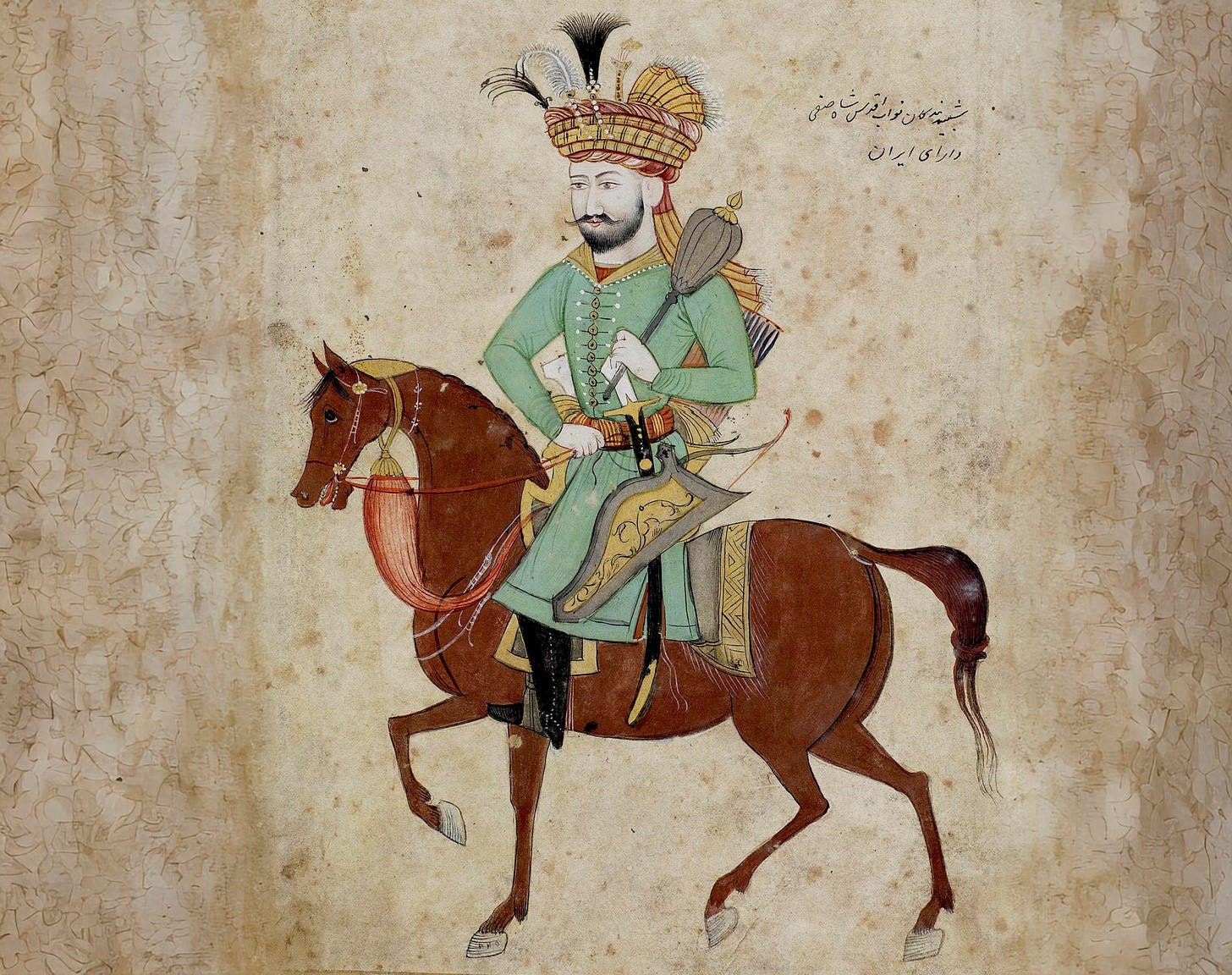
Welcome to The Voyages and Travels of the Ambassadors, the epic story of a 17th century trade expedition from Germany to Persia that failed so completely its leader was publicly executed upon his return. This is Episode 22: Pleasure and Pain.
As we ended episode 21, Shah Safi had returned from a month-long hunting trip and promptly went on a drinking binge. He threatened to murder his chancellor for not drinking a large cup of wine, and several gentlemen of the court were wounded when they prevented him from murdering one of his eunuchs for not drinking. He then rewarded two young men of the court for drinking out of the cup, but he took back his lavish gifts in the hungover light of day and gave them cash instead.
Persian shahs before and after Safi routinely forced their subordinates to drink large amounts of wine. There was even a large golden cup with a name that was reserved for such events. They called it “the 1,000 vocations,” which referred to the belief that those who emptied it two or three times were magically enabled to speak randomly and authoritatively about a whole variety of subjects.
That particular cup may, or may not, have been the one used by Safi. Sometimes the shah used the ritual purely as entertainment, finding enjoyment in watching as high officials were carried away in a drunken stupor. Other times he used it to punish people who did things he didn’t like, or to extract secrets from his advisors. And it was also used by court officials who found that a drunken shah was easier to manipulate.
Be that as it may, before we witness the final negotiations between the shah and our ambassadors from Holstein, we might benefit from a brief family history of the man who spends so much time drinking, hunting, and killing.
Safi is the grandson of Shah Abbas I, and he had succeeded to the throne only because Abbas had murdered his eldest son and blinded his younger sons. Like the sons, the grandson spent his youth in his grandfather’s harem, where he was regularly given large amounts of opium and alcohol.
Abbas took the throne from his father in 1587 with a military coup that succeeded only because his father was a weak man and a weak ruler. Abbas, on the contrary, was neither. Upon seizing power, he sent his father to die in prison and blinded his two surviving brothers to prevent them from mounting their own coup.
He sired eleven children, five of whom were sons. Two of the boys died in childhood, and the other three spent much of their time in their father’s harem – with their sisters, the ladies of the harem, and the eunuchs.
Abbas began his reign by continuing the practice of appointing royal princes to provincial governorships. His eldest son, Safi Mirza, was made governor and commander-in-chief of the province of Hamadan when he was only four years old. But Abbas recalled him shortly afterward, and then abandoned the practice so his sons could not be used by his political enemies – as he and his brothers had been.
His harem consisted of up to 500 women, three or four of whom were wives he had officially married. The rest were concubines – mainly from Georgia, Armenia and Circassia – slaves who had been taken in war, purchased, or received as gifts from local governors.
When he needed new women, Abbas would issue a proclamation and all the presentable young women in the city were brought for inspection by the royal eunuchs. Parents who failed to respond faced death. The most beautiful among them were chosen by the shah, and the rest were sent home.
To make way for the new arrivals, Abbas would marry off some older concubines to officials who wanted his favor. Before leaving, they had to swear an oath not to reveal the secrets of the harem.
Although Abbas is known as the greatest of all the Safavid shahs, and in many respects the father of modern Iran, he had many enemies and was desperately suspicious – even if he had good reasons to be. Out of a very real need to safeguard his rule, he also weakened the future of his own state by failing to train his sons in statecraft and by and prohibiting them from joining his military campaigns.
Crown Prince Safi Mirza had a reputation of good character and warm personal qualities that made him popular among the people. When Abbas heard of plans to depose him, and place the crown prince on the throne, he took the advice of his court astrologers and closest counsellors. He gave the order, and his son was stabbed to death in 1615 while returning from his bath.
The murder caused riots among the people, which eventually led to nothing because no one outside the court’s inner circle knew that Abbas had murdered the popular prince. He found out later his son was innocent, and never recovered from the memory of his murderous decision. But he also blinded his two remaining sons and two of his grandsons, and Islam prohibits blind men from succeeding to the throne.
Thus, Abbas had no direct male successor, and Shah Safi was the first of the Safavid rulers to have spent his youth confined in the harem. Abbas had ushered in a “new normal” of failing to train competent successors, and he died on January 19, 1629. Nine days later, his 18-year-old grandson ascended the throne.
Growing up, Safi had no contact with the leading aristocracy or military leaders. Instead, the first 18 years of his life were spent in the women’s quarters, where he was indulged in every way by courtiers, eunuchs and concubines. He was also an alcoholic who was addicted to opium, and his reign began with binge drinking and binge murdering.
Early in 1629, an agent of the Dutch East India Company, one Jan Schmidt, described a royal banquet where the guests waited three hours before Safi showed up drunk. His drunken courtiers constantly insulted each other, exchanging blows in public and bringing disrepute on themselves and the shah.
Several well-documented stories reveal that Safi made important decisions during royal drinking parties. In 1633, for example, Safi executed the governor of Shiraz and two of his sons at a party. In another incident, Safi reprimanded his Grand Vizier at a party, did not like the man’s response, and ordered his palace guards to behead him on the spot.
In the early years of his reign, almost all the royal princes, including some of Safi’s cousins, were systematically blinded or murdered. In 1632, he executed the second most powerful and wealthy man in Persia, and all of his sons, on the charge of conspiring with insubordinate dignitaries. Between 1630 and 1634, a large number of leading figures in the empire and servants of the court were murdered, including – to name just a few – the commander-in-chief of the armed forces, all the generals of the royal guard, and the Grand Vizier.
Jean-Baptiste Tavernier wrote in his 1678 book that Safi was “a novice in the art of government” for many years. “But time opening his eyes, the first remarkable thing which he did, being at Caswin, was to cut off the head of Ali-Kouli-Kan, that great Captain who had conquered kingdoms for Sha Abbas, and the heads of three of his Sons. After that, returning to Isfahan, he cut off the heads of seven of the principal Lords of his Court; and by little and little took the Government into his own hands.”
The massacre marked the end of the system where the extended royal family held power and inaugurated a phase in which the shah became the sole ruler, surrounded by his palace entourage, consisting of women, eunuchs and slaves.
Some level of systematic murder was the rule – not the exception – in the courts of both Persia and Ottoman Turkey. Shah Safi was certainly not the only ruler who came to the throne because his father was murdered by his predecessor.
All the evidence available about Shah Safi tells us he held power by keeping the country in a constant state of fear of arbitrary execution. Even further than that, Safi was not only useless in the performance of his duties but also totally uninterested. It appears that he took no interest in the intellectual and cultural life of his people, and never adequately learned to read or write.
On the other hand, this combination of character flaws might be expected from a drug-addicted alcoholic whose protectors dosed him with opium at an early age, and then served him large amounts of alcohol in the apparent belief that it would counteract the opium.
Eventually, Shah Safi drank himself to death while on a military campaign to Gilan Province, where he hoped to recapture a frontier city from the Mughal emperor of India. He threw a drinking party that lasted several days, his health failed, and he took to his bed. He died on May 11, 1642.
On our journey, it is currently November 1637, and Shah Safi is still alive and drinking. Although it is a country of Muslims, and Islam technically forbids alcohol, all the Persian elites use copious amounts of wine and opium without scruple or shame.
The masses, on the other hand, do not drink much alcohol, but they do use a lot of opium. Peasants use it to cope with the drudgery of daily life, workers use it to cope with the tedium of hard labor, and soldiers consume it before going into battle. The Persians call opium the hashish of the poor, and 17th century observers estimate that out of 1,000 people perhaps 20 would not be involved in the consumption of opiates.
Opium most likely originated in Asia minor. It was cultivated in lower Mesopotamia around 3400 BC. It was mentioned in Homer’s Odyssey as the drug that quiet all pains and quarreling. The Greeks and Romans used it as medicine, the drug is believed to have come to Persia with Alexander the Great, and the Mongols brought opium to China. It is known in Persia as an antidote to snake bite.
Opium is cheap, legal, and – unlike alcohol – carries no negative religious connotations. It also suppresses the appetite, and so makes a good substitute for food.
Adam Olearius tells us that large tracts of land around Isfahan are planted with white poppies, and that Persians make small opium pills about the size of a pea, taking two or three at a time. Those who are more accustomed to the drug take about an ounce at a time. Some take it only once every two or three days, which makes them sleepy as if they are a bit drunk.
“The women do not ordinarily take any,” he writes, “but those who are not able to bear with their imperious husbands and prefer death before the slavery they live in, do sometimes make use of opium, whereof they take a good quantity, and, drinking cold water upon it, they, by a gentle and insensible death, depart this world.”
It is said that the first wife of India’s Mughal Sultan Jahangir killed herself with opium in 1605 out of grief of over her son’s rebellion against his father.
And after Shah Abbas I blinded his son Safi Quli, the son killed his own four-year-old son by strangulation and then took his own life by ingesting opium.
Following a failed diplomatic mission or defeat in battle, Persian officials seem to have frequently taken their lives to avoid the wrath of the shah and possible execution. In 1628, the Safavid ambassador to England died from an opium overdose after fearing he might be executed after returning to Isfahan. In 1637 the commander in chief of the army defending Baghdad against the Ottomans committed suicide by eating opium.
Opium is less common as a murder weapon, but on November 24, 1577, Persian Shah Ismail II, after a night of wandering about town with his companion, may have been murdered by enemies who laced his opium with poison.
Three other European travelers whom we have met before – Jean-Baptiste Tavernier, Jean Chardin, and Pietro del Valle – say poppy seeds are often eaten mixed with honey, those who abstain from wine for religious reasons tend to take opium, and that many Persians find it hard to kick the habit. Del Valle tells us that a large amount of wine can serve as an antidote to opium overdose, but that the remedy does not always cure the patient.
Opium is not the only drug used by the Persians, though. Olearius tells us they also use marijuana to arouse sexual appetite.
“To prepare this drug, they gather the leaves before they come to seed, dry them in the shade, beat them to powder, which they mix with honey, and make pills thereof, about the bigness of a pigeon’s egg,” he writes. “They take two or three of them at a time, to fortify nature. As to the seed, they dry it, put a little salt thereto, and eat it by way of dessert.”
It is hard to imagine how this adds any fuel to their lustful inclinations, Olearius says, because everywhere they congregate they already use “all imaginable inventions to stir themselves up to lust,” including “men and women dancers, who provoke them to brutality by their obscene postures.”
On the way home to Holstein, Olearius says, a 70-year-old Persian ambassador to Duke Frederick uses cannabis for this purpose after taking a new young wife in Astrakhan.
“They use also the seed and leaves of hemp to revive languishing nature,” he writes obliquely, although neither he nor the other German naturalists understand how it does this. It may be, he concludes, that cannabis has different properties in hot countries like Persia than it does in the cold climate of Europe.
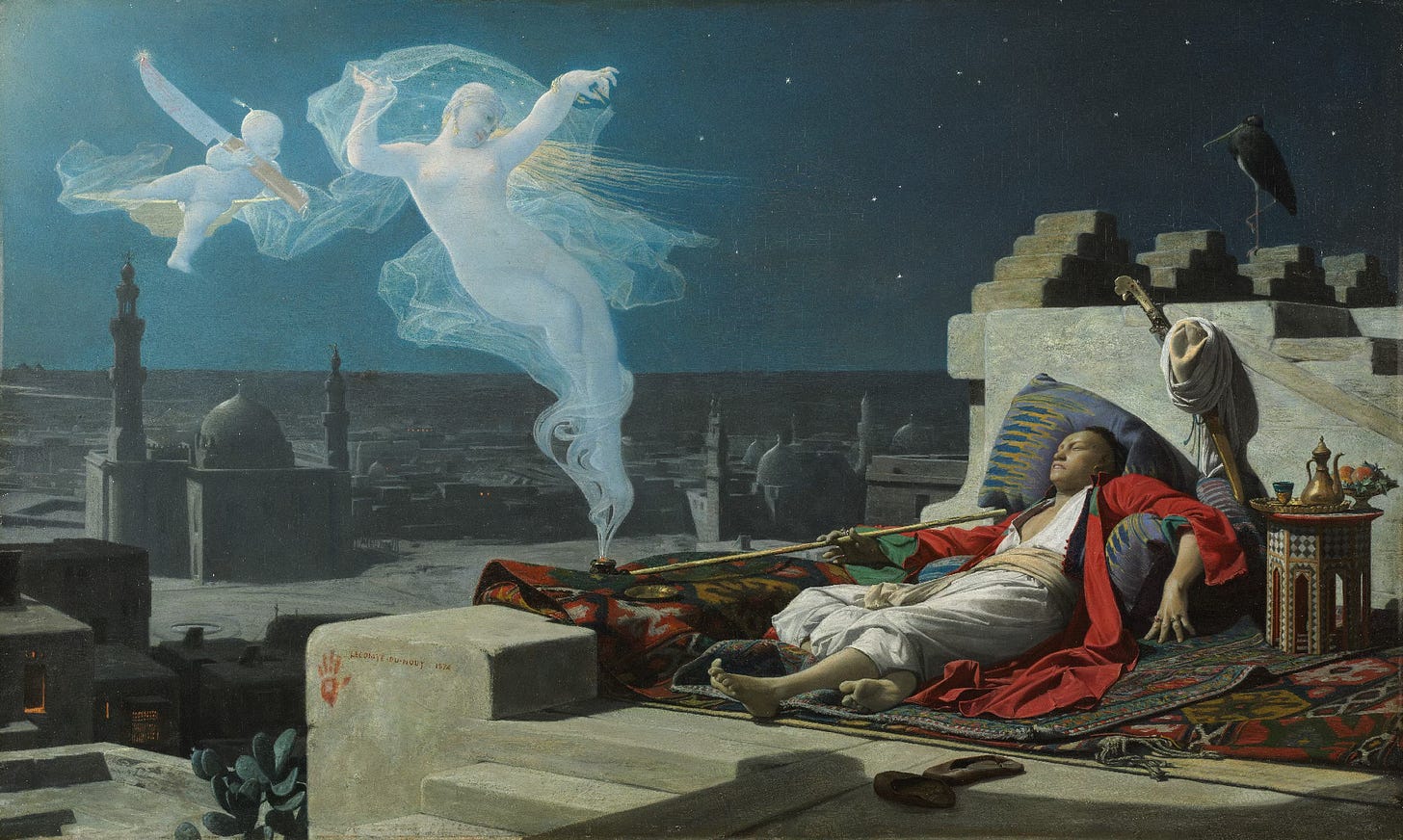
A eunuch is a castrated male. In ancient China and the Middle East, eunuchs were hired as both harem guards who acted as intermediaries with the male world of the court, and as high-ranking officials. In some jurisdictions, eunuchs required an annual license that could be renewed by producing the jar containing their genitals. Those who had lost their own jar were known to borrow or rent one to avoid losing their license.
In Isfahan, Shah Safi has been surrounded by eunuchs since his birth in 1611. He is now 26 years old, and Olearius informs us that Safi’s chancellor is a eunuch who serves as the president of the shah’s council and the principal minister of state.
The shah’s chief justice is also a eunuch, and his primary functions are to preside at the judgement of criminal cases and to be personally present at the executions. Born in Georgia to Christian parents, he had been kidnapped as an infant and sold to the court of Shah Abbas.
Safi’s chamberlain, or chief gentleman of the chamber, is also a white eunuch from Georgia. He is a personal favorite of the shah, Olearius tells us. Being present at all public and private functions, he knows how to obtain favors from the shah that no one else can even ask for.
In his book of travels first published in 1686 – which we discussed in episode 14 – Jean Chardin writes that the eunuchs he meets “have most commonly fine tongues, smooth, flattering, and insinuating, and know wonderfully how to find the way to the heart.”
Under Islamic law, their status as slaves makes eunuchs the adopted sons of their owner. The shah trusts them implicitly, and by the time Safi takes the throne, these slave eunuchs govern eight of the fourteen biggest provinces in Persia, and 20% of the high administrative posts. Of course, not all of the palace staff are eunuchs. Some of the notable exceptions include the royal physician, the royal astrologer, the comptroller of assay and other officials of the royal mint, and the keepers of various seals.
All the eunuchs are slaves, but the white eunuchs from the Caucuses are employed outside the harem, while the black eunuchs – some from Africa, but most from India, Malabar, or the Gulf of Bengal – have exclusive charge of the women inside the harem.
All are castrated between the ages of seven and ten, but there are two types of castration. The black boys suffer the most severe form of castration, having all their genitalia removed. Details of the surgical procedure are gruesome, and involve strapping the child to a chair. The death rate was as high as 33%. Those who survive are forced to urinate through a hollow quill for the rest of their lives.
White eunuchs do not guard the women, and thus have only their testicles removed.
Although castration is usually performed by priests, Shah Abbas liked to castrate many of them himself and is said to have done it with such care and precision that very few died under his hands.
According to Jean Chardin, there are three gates guarding the way into the harem, and the final one is guarded by white eunuchs.
“The First Gate of the harem is guarded by the King’s Porters,” he writes. “Whoever has any Business at the Palace, and with the Persons of Quality, passes this gate freely. The Second is guarded by the Captain of the Gate, with several Domesticks and a number of Guards, and none but the Officers of the King’s Household are permitted to pass it, unless they are expressly sent for. The Third is guarded by Eunuchs, and none must come within Sight of this: In Reality, one must be quite upon it to see it; for it is situated in the corner of a Turning, contrived on purpose that it may not be discovered.”
Anyone who does see this third gate without permission is subject to the death penalty, and Chardin relates how the penalty is carried out.
One day, the prime minister informs the shah that some drunken young noblemen have caused a disturbance near the third gate. The shah orders his soldiers and officers to execute anyone found drunk on the streets of the city – except those who carry what amounts to a royal permission slip.
The executions are carried out on the spot by ripping open the man’s belly with a knife. “They say in Persia open the belly as we say among us to hang or cut off the head,” Chardin writes. “Because the most common kind of punishment is to rip open the belly, which is done by plunging a large dagger into the belly, on the left side, and drawing it round to the very back – a punishment that is not so quick a dispatch as that of beheading.”
The final trade meeting between our ambassadors and the shah’s men occurs on November 21, 1637, and is arranged by the chancellor, who is a eunuch. Olearius briefly relays his story.
“His name was Tagge, and he was about sixty years of age, having one eye black, the other blue, a full face, but yellowish or inclining to an olive,” Olearius writes. “He wore no beard, as being a eunuch; and upon that occasion we shall here give a short account of him and his fortunes, which we think may deserve insertion in this place, though there are various relations thereof.”
When he was young, Tagge worked as a scribe, copying documents in a city Olearius calls Keintze. There he fell in love with a young boy and raped him. The boy’s father complained to Shah Abbas, who commanded that Tagge should have his genitals – and all its dependences – cut off. Others reported that Abbas condemned him to die. Upon hearing of the death sentence, Tagge cut off his own genitals with a razor and sent them to the shah, saying that he himself had punished the members which had offended his Majesty. And, since his head had done no harm and might yet be of service, would he please leave his head intact?
The shah was astonished at the strange resolution of the man, found an affection for him, and made him Secretary in his Court of Chancery. Shah Safi, having killed Tagge’s predecessor with his own hands, sent him the Golden Inkhorn, which is the Badge of the Dignity of Chancellor.
The shah invites the ambassadors to dinner on December 3, and Olearius tells us this is the final time they visit court. After dinner, the shah explains his decision about the trade negotiations. He will send an ambassador back to Holstein with the Germans, at which time he will deliver the shah’s recommendations to Duke Frederick.
The ambassadors thank the shah for all the honors he has bestowed upon them during their stay in the kingdom. The following days are spent exchanging gifts with all the people they have met in Isfahan. On December 10, the shah sends word that – if they like – they can accompany him on the first leg of the journey home, to the city of Casan. They accept, and the departure is set for December 18.
On December 11, things begin to go badly.
First, the Germans hold a going-away party, and Otto Bruggeman fires the artillery every time someone offers a toast. Their interpreter says every shot can be heard at the palace and begs Bruggeman to stop. Bruggeman responds by ordering more cannon-fire, and adds the sound of trumpets to the mix.
Second, their Armenian translator tells the Germans that one of his beautiful daughters might be taken for the shah’s harem. Bruggeman advises him to resist the shah’s men, and assures him that the soldiers of the embassy will come to his aid if needed. This is dangerous advice that risks the lives of every Christian in the suburb of New Julfa.
And third, Bruggeman falsely accuses one of his gentlemen, one Lion Bernoldi of Antwerp, of stealing from the company. Bernoldi is arrested and put in irons. The man had become friends with the factor for the Dutch East India Company, and Bruggeman grew jealous of the relationship. Fearing for his life, Bernoldi escapes and asks for sanctuary in the shah’s palace.
Bruggeman sends a messenger to the shah asking for Bernoldi’s return. The answer is that any stolen items found in the man’s possession will be returned, but they cannot force him to leave sanctuary. Bruggeman is “so transported with passion” that he says – out loud – that he will have Bernoldi killed even if he is found in the shah’s own arms.
Bruggeman persuades one of the Armenians to sneak into the palace at night and retrieve the man. Even worse, he sends 20 soldiers – armed with firelocks and muskets with match lighted – to kill Bernoldi should he be found leaving the palace grounds. Musketeers only have the match lit if they intend to fire, and their presence at the gate provokes the Persian guards.
A scuffle ensues, which fortunately does not end in gunfire, but the noise is enough to wake the shah. He commands the gate to be shut, and informs the lords of the council that, since he cannot be safe in his own palace, either he will leave the city or the Germans will.
Olearius tells us the shah had ordered them all to be murdered and cut into pieces, and that only the intervention of the chancellor saves their lives. Duke Frederick could not possibly have approved the insolence of Ambassador Bruggeman, the chancellor tells the shah, and the Germans will surely be punished as soon as the Duke is informed of their transgressions.
They leave Isfahan on the evening of December 21, 1637.
We were supposed to begin an exploration of the city of Isfahan in this episode, but other subjects diverted me. And so next time we will listen as Adam Olearius give us a full and particular account of the Metropolis of Persia, greater than that provided by any other author, and done with exactness enough to satisfy even a mean curiosity, on the Voyages and Travels of the Ambassadors.





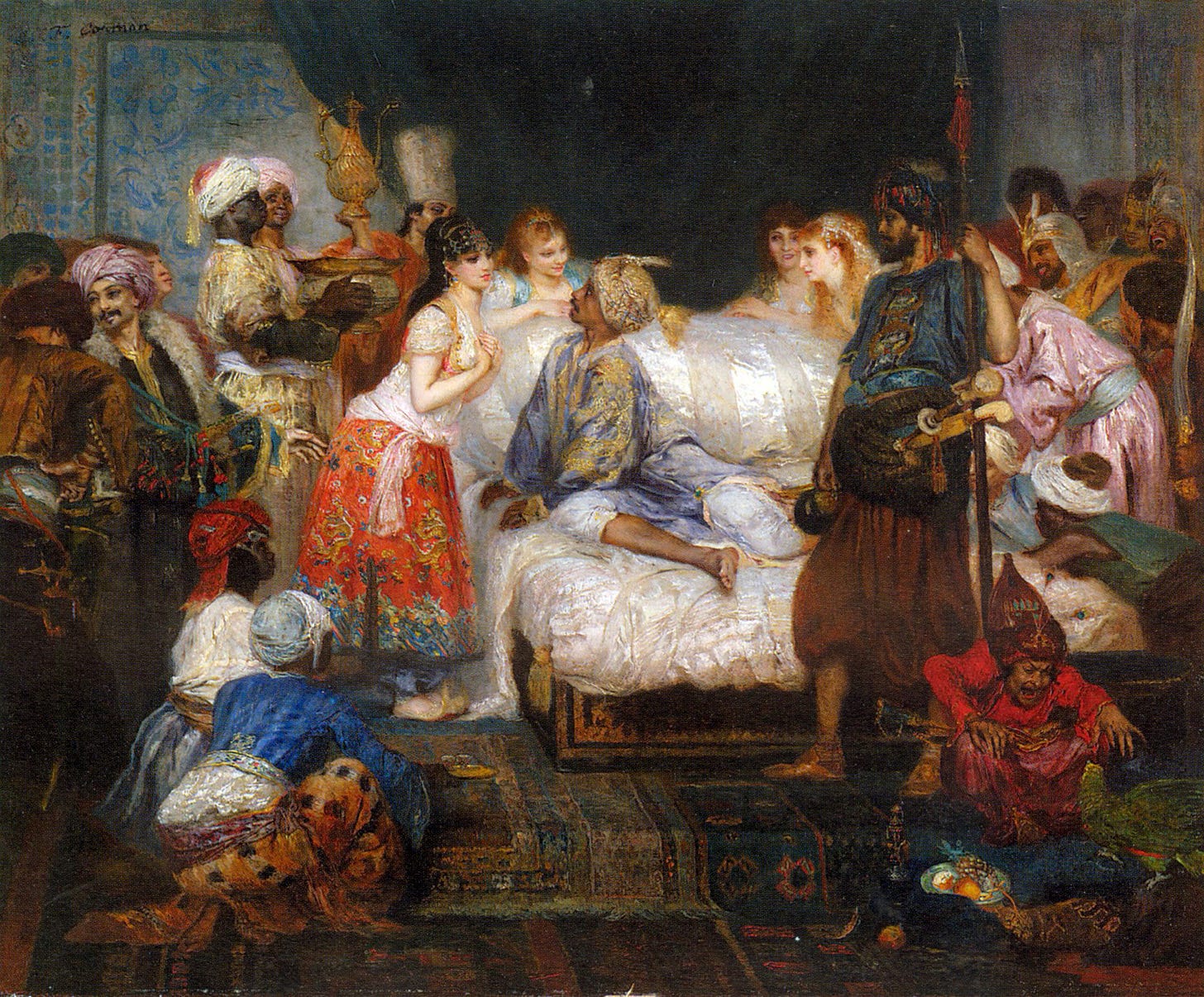


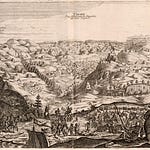
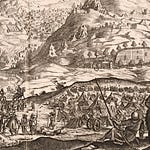



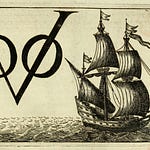
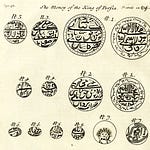
Share this post